Hope in the New Year
The Samaritans gather these wintry Tuesday mornings in a small deli in Tubac, Arizona before heading down to Nogales, Sonora, and the challenges of the comedor. The deli personnel know us well and so do many of the customers, as they give us a wide berth. The talk is spirited and loud, fueled by the caffeine and sugary pastries. I check in and out of three different conversations in the space of five minutes. Several tables are shoved together this morning as there are thirteen of us, with several visitors from Idaho and Wisconsin. A pair of teenagers are among the group, and there is some anticipation and nervousness about the whole venture. I tell the teens that they may see young people their own age who have been walking or hopping trains for thousands of miles. After priming ourselves with coffee and tales of past trips to Nogales, we head out the door.
The building area for the Wall that divides Mexico from the U.S.A. is a beehive of machinery, dust, and men shouting out orders. Someone comments that the Wall may be a futile attempt at security, but at least it is putting a lot of people to work. The peddlers, the windshield washers, the street people all greet us with friendly shouts and newspapers for sale. One fellow trying to sell his wares has a fever. It is January, and everyone seems to have a cold. We promise him some aspirin on the trip back for his fever and discomfort.
We reach the comedor and see the lineup of migrants outside the door—perhaps fifty, maybe more. Breakfast has been served and they are waiting for us with our donations of clothes, toiletries, and talk. Several people have hands and feet wrapped in gauze and bandages. One fellow tells me that his thumb was severed while riding a train from Guatemala. He has been traveling a month, and was walking in the desert four days. Three young women wrapped in colorful ponchos ask if we have warm jackets. Their hair hangs to their waist in long thick braids. Seeing my camera, they ask me to take their photograph.
I see a little boy and a group of young men, all from Honduras. They have been walking or riding on a train for twenty-one days. The young child is nine years old, and his father tells me in English that he is happy to be here and has no intention of trying to cross into the United States. To my amazement, the father has a Brooklyn accent. What??!! It turns out that he lived in Brooklyn for ten years, was deported in 2004, and returned to Honduras where he was born. I ask why he has taken his young son and made this long and dangerous journey to the U.S./Mexico border?
He tells me this:
“Honduras is full of soldiers with guns everywhere. There are no jobs and I am a skilled automotive repairman. I do body work. I do not want my son to grow up where he is not safe going to school because of the violence. And then there are the drugs….”
I ask, “So what are your plans?”
He tells me he will find work as a car repair person in Nogales, Sonora, and eventually open his own shop. He acquired his skills in New York and believes he can do well in Nogales. The man is positive, upbeat, and anxious to get his dreams into action.
“Gringos will bring their cars to me from the U.S. because I am good, I am honest, and I’ll give them a good price.” You could smell hope on this guy.
His son, Kevin, is holding a bundle of clothes and a blanket from the comedor. Looking tired, he gives me a grin. When I take a photo of father and son, several other men from Honduras crowd into the picture—they are together, and I get the sense that these folks are going to make it. One fellow holds up two fingers, giving me the peace sign.
There is more hope here than despair. It is a good feeling to be in this crowd today.
Our visitors from Wisconsin and Idaho are overwhelmed with the happy confusion and activity. They pitch in and help sort the bags of clothes and are helpful in distributing the shoes, the hats, the jackets and blankets.
And on the long walk back to the U.S. Border and my warm, safe life in Arizona, I wonder what it would take for me to travel thousands of miles with a child on trains, on foot, with no money or credit cards or a waiting family. I try to wrap my brain around this thought. It is practically impossible for me to imagine. And yet I have spent the last several hours with people who have taken this risk.
As we approach the U.S. Border I see the street peddler with the fever and give him a baggie of aspirin. He whispers “gracias”, and we are on our way.
I would rather be in the presence of these people than almost anywhere today. When I am surrounded by people with hope for their future, what right have I to feel hopeless?

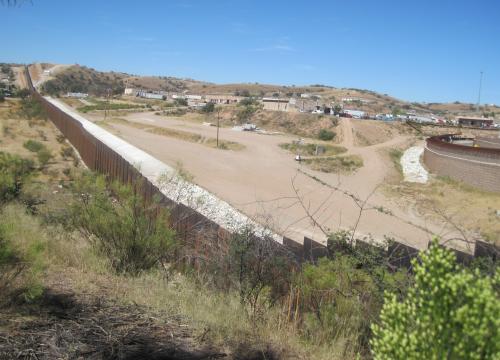
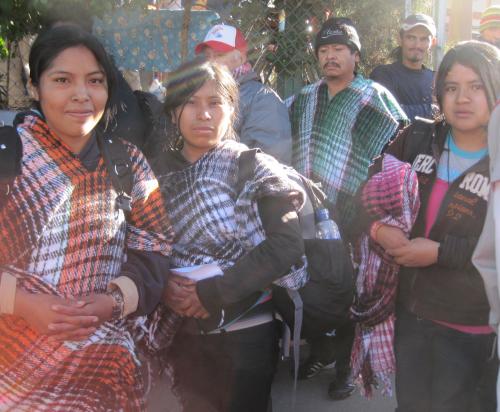
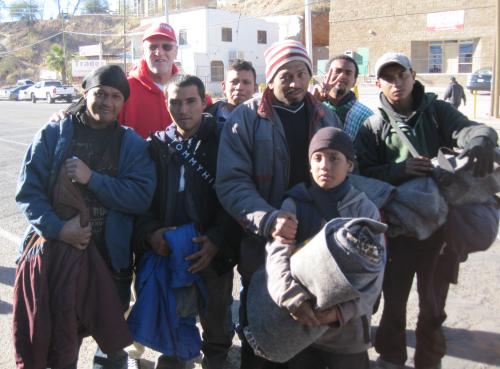
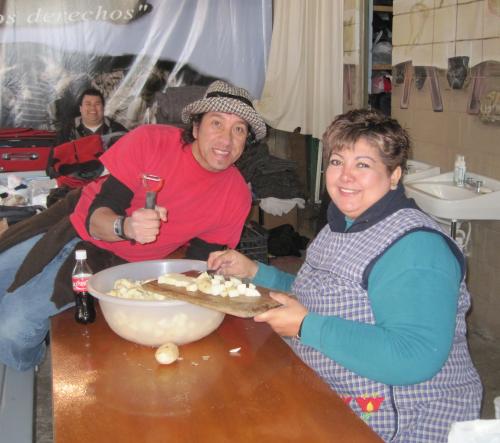
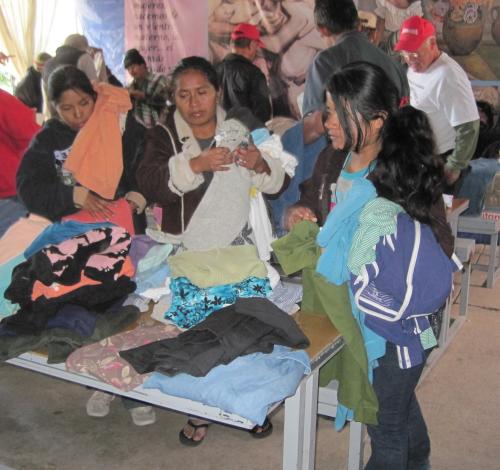

Oh, man. This one brought tears to my eyes. Truly, what right do we have to feel hopeless?
Exactly… what right do we have to be hopeless? I wonder how many Americans really know how fortunate, how blessed they are. Been meaning to respond to your terrific blog for a while now. Every posting is wonderful, inspiring reportage from the “real” border. This last – “Hope in the New Year” – is lovely: heartfelt and beautiful. Thank you for the good work you and all Samaritans do. Keep up the good work 🙂
That’s a brilliant answer to an interesting question